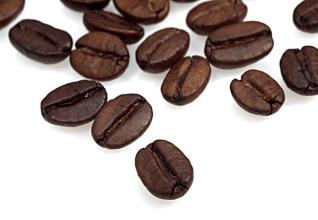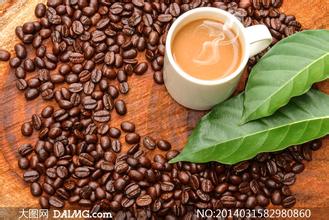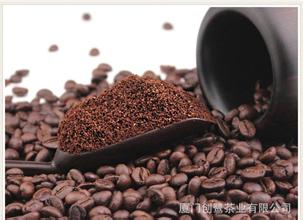The estimated output of Yunnan coffee is 150000 tons in the harvest season.
Kong Zanlong revealed that of the more than 10,000 tons of coffee Nestl é purchased in Pu'er, 85 percent were exported to Nestle factories in Switzerland, Spain, Russia, Australia, France, Britain and other countries, and only 15 percent were sold in China. Yunnan is very suitable for growing coffee. Compared with other areas, coffee cultivation has fewer diseases and insect pests. And Chinese farmers are very good, with the highest yield in the world. Now, the biggest challenge Nestl é faces in Yunnan should be how to maintain the sustainable development of coffee cultivation. "
At present, Nestl é is still increasing its investment in Pu'er. Compared with neighboring countries and regions, China's per capita coffee consumption still has great potential. "according to the first round of forecasts, the Pu'er region is expected to increase by 5000 to 10, 000 tons this year. More than 1000 tons are expected to be collected this year. " Sources from the Nestle Coffee Center revealed that Nestl é will increase its harvest this year and is expected to reach about 13500 tons.
Although the purchase volume of Nestl é is increasing every year, the harvest standards have been relatively strict. The most difficult acquisition seasons were in 2013 and 2014, when only more than 5000 tons of coffee were purchased in both seasons because frost affected the quality of coffee. In order to ensure the quality of the coffee purchased, Nestl é agronomists continue to come into farmers' homes to teach the knowledge of coffee cultivation, hoping that the coffee quality will be higher and higher.
Kong Zanlong, manager of Nestl é China Coffee Agronomy Service Department, said that after more than 20 years of efforts, Nestl é's coffee planting activities in Yunnan have had an impact on the region's economy. Yunnan Pu'er has gradually developed into a coffee bean product with high output and high quality. "Last year, my family lost more than 70,000 yuan." When it comes to coffee, Lao Wang said a helpless thing-- in the past, the coffee standard was controlled by himself. Last year, he left this to the young people at home. "as a result, the young people did not listen to advice and were lazy. They mixed good fruit and secondary fruit and shelled them for inspection. As a result, Nestl é found that the fruit did not meet the standard and refused to accept it." The rejection of coffee fruit last year caused an economic loss of more than 70,000 yuan, he said.
Almost every family in Dakaihe village grows coffee, and many people become rich as a result of growing coffee. Dong Ruichang, 51, has been in the coffee business for many years and is hospitable. "when it comes to the annual harvest season, many coffee brands from all over the world come to the mountains to buy coffee, just to focus on the quality of the coffee," he said. " Harvest began on November 4 this year, and hundreds of kilograms have been collected.
"now joined the 4C certification, through the training of Nestl é, my family grows coffee with few diseases and insect pests, high quality, so it has attracted a lot of people to inquire. But according to the contract, the coffee is still sold to Nestle Coffee Red! Yesterday, the old Wang family from Dakaihe Village in Pu'er, Yunnan Province, set out to start the coffee harvest this season. Lao Wang, 77, said: "there is a lot of Rain Water this year. The coffee was harvested more than 20 days later and nearly 30 days later than last year. By this time in previous years, my family had already collected two or three tons, and it was only this year that we started picking."
On the coffee mountain, red coffee fruits hang all over the branches; picking, shelling and drying. This is the busiest time of the year for farmers. According to the news from Pu'er Nestle Research and Development Center, coffee quotations for this season will officially begin on December 7.
According to the data released by Yunnan Coffee Industry Association, Yunnan coffee production is expected to reach 150000 tons in 2016, and the price trend is good.

Important Notice :
前街咖啡 FrontStreet Coffee has moved to new addredd:
FrontStreet Coffee Address: 315,Donghua East Road,GuangZhou
Tel:020 38364473
- Prev

The first Asian Coffee Annual meeting was held in Mangshi, Yunnan.
Coffee in China has a history of one hundred years. By the beginning of 2016, the planting area of coffee in China exceeded 1.8 million mu, with a total output of 140000 tons, accounting for 1.5% of the total global output. Yunnan has a planting area of 1.83 million mu and an output of 132000 tons, accounting for more than 95% of China's total. Coffee has become Yunnan's third largest export commodity with plateau characteristics to earn foreign exchange. Gong Jingzheng, governor of Dehong Prefecture
- Next

Create the Central American market-six countries' boutique coffee will come out together.
Qian Zeng Aizhu, Ambassador of El Salvador to China, said that sa coffee, with a variety of unique coffee varieties and characteristics, is famous for its exquisite coffee in the world. In addition to the TSCC coffee association responsible for overall production and marketing operations, quality control and marketing overseas, in order to produce the highest quality coffee, there is also a Salvadoran coffee school, which aims to become a regional teaching and training center. 2016 sa
Related
- What is the standard process for the purpose of coffee cup testing? What is the difference between hand-brewed coffee and cup testing?
- How to use hand-brewed coffee paragon small golden balls? How does cold coffee lock in the aroma of coffee?
- Is American coffee black? What is the difference between American coffee and drip coffee?
- Unexpected! Well-known tea beverage brand Lele Tea will withdraw from the Zhengzhou market!
- Starbucks enters the fashion and beauty industry?! Netizen: Give me an ice American eye cream
- Why can American refills for free? The difference between Americano and American drip pot coffee
- Being chased out of the rain in front of Starbucks?! Store: Sheltering from rain under umbrellas poses a safety hazard
- The white moonlight has changed?! Lucky launches "Big Winter Pear American"
- Hand-brewed coffee three-stage method, high-sweet and universal brewing method to share! What does the high sweet water level of hand-brewed coffee mean?
- What is the difference between raw, refined and full espresso coffee? How to extract espresso and taste good?

